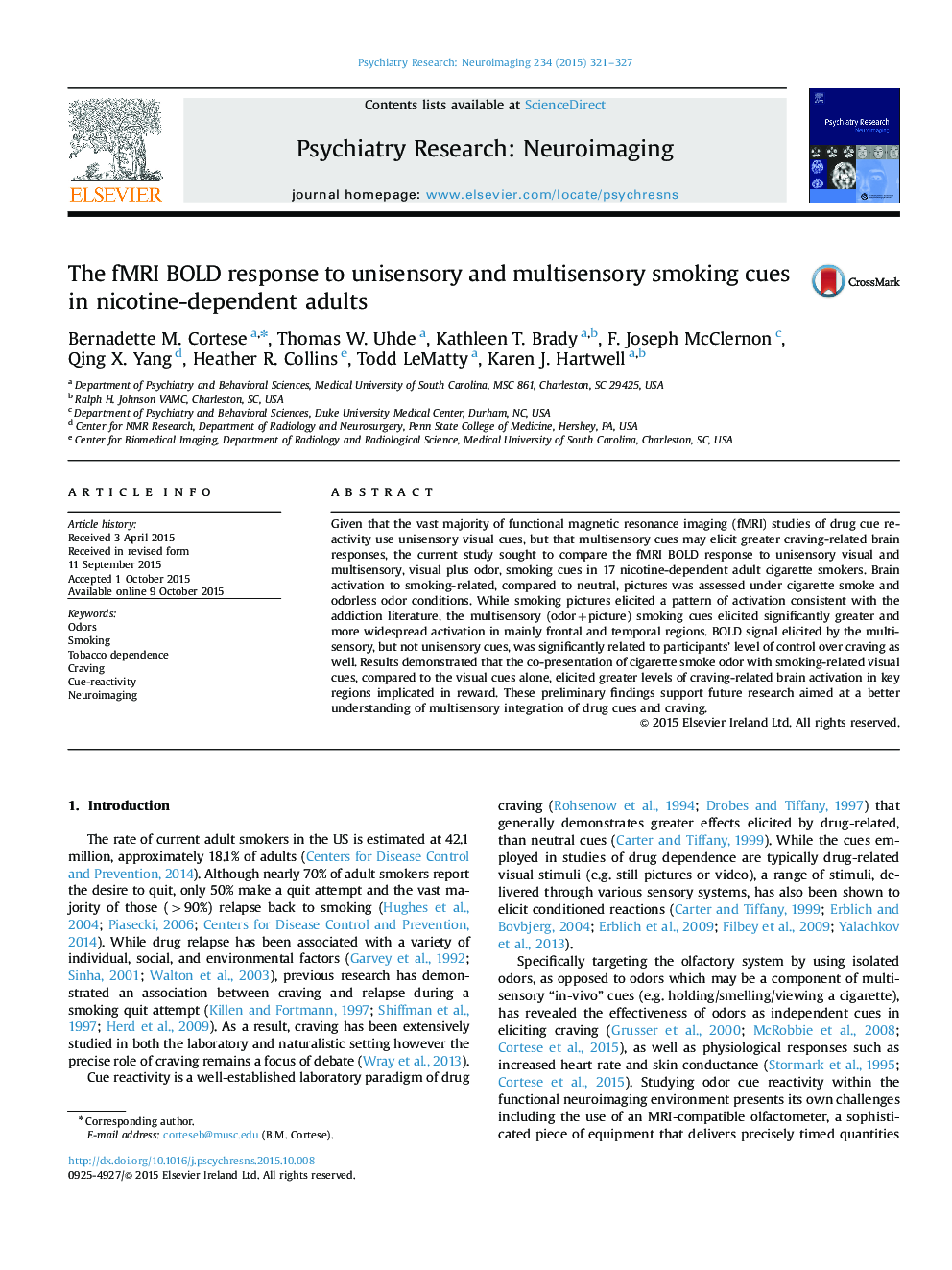| Article ID | Journal | Published Year | Pages | File Type |
|---|---|---|---|---|
| 6817325 | Psychiatry Research: Neuroimaging | 2015 | 7 Pages |
Abstract
Given that the vast majority of functional magnetic resonance imaging (fMRI) studies of drug cue reactivity use unisensory visual cues, but that multisensory cues may elicit greater craving-related brain responses, the current study sought to compare the fMRI BOLD response to unisensory visual and multisensory, visual plus odor, smoking cues in 17 nicotine-dependent adult cigarette smokers. Brain activation to smoking-related, compared to neutral, pictures was assessed under cigarette smoke and odorless odor conditions. While smoking pictures elicited a pattern of activation consistent with the addiction literature, the multisensory (odor+picture) smoking cues elicited significantly greater and more widespread activation in mainly frontal and temporal regions. BOLD signal elicited by the multisensory, but not unisensory cues, was significantly related to participants' level of control over craving as well. Results demonstrated that the co-presentation of cigarette smoke odor with smoking-related visual cues, compared to the visual cues alone, elicited greater levels of craving-related brain activation in key regions implicated in reward. These preliminary findings support future research aimed at a better understanding of multisensory integration of drug cues and craving.
Related Topics
Life Sciences
Neuroscience
Biological Psychiatry
Authors
Bernadette M. Cortese, Thomas W. Uhde, Kathleen T. Brady, F. Joseph McClernon, Qing X. Yang, Heather R. Collins, Todd LeMatty, Karen J. Hartwell,
